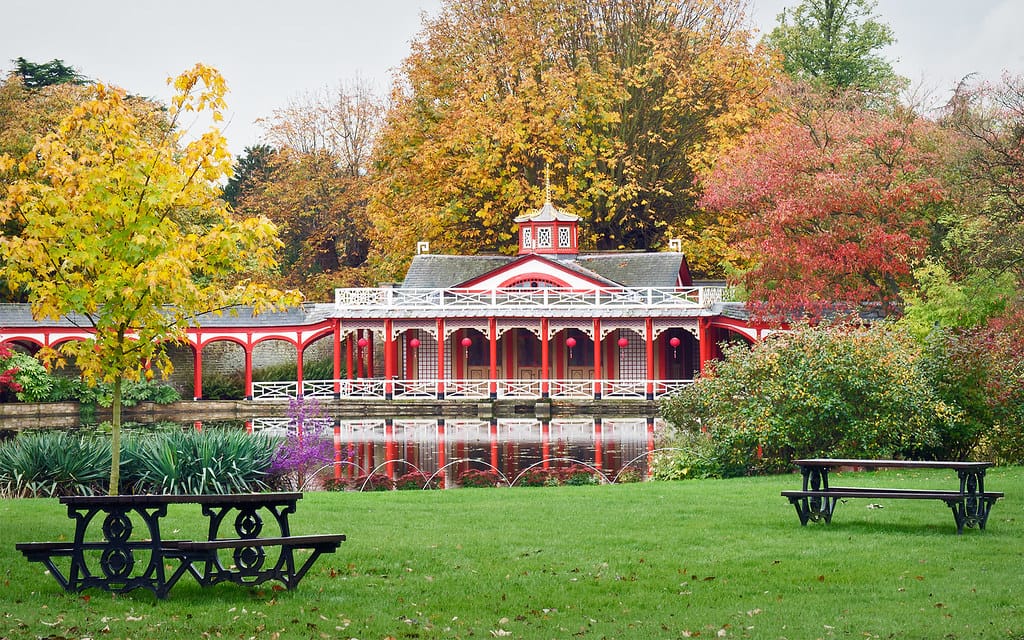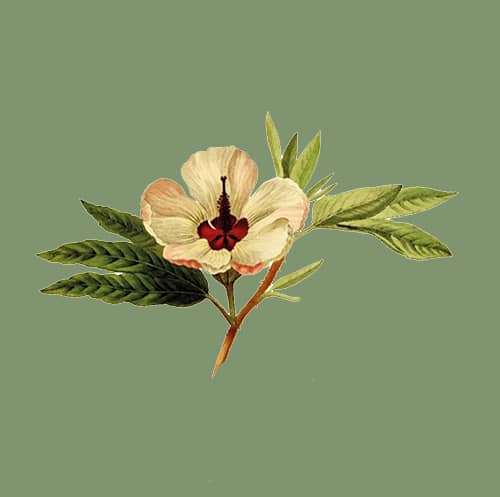As we continue our walk through the gardens of time of our historical landscape designers. This week we uncover the work of Humphry Repton; an influential figure in landscape design.
Humphry Repton left an undeniable mark on England’s landscape during the late 18th and early 19th centuries. His innovative approach, blending artistry with practicality transformed the way people viewed and incorporated the natural canvases around us. His artistic drawings, and more specifically ‘Red Books’ have shaped the landscaping design process, of which the process, craft, and skills are still being used today.
Let’s delve into his life, some of his most notable work, and the footprints he’s left in the world.

Early life
Humphry Repton entered the world in 1752 in Bury St. Edmunds, Suffolk. He is said to have exhibited an early fascination with nature and art. Growing up amidst the stunning landscapes of England undoubtedly played a significant role in shaping his future career as a landscape designer.
Career Exploration
However, Repton’s journey to this profession took time; he explored various paths before finding his true calling. Repton dabbled in diverse fields from journalism to drama, art and a political agent to a confidential secretary to his neighbour. Interestingly, it was a childhood friend named James Edward Smith, a botanist, who recognised Repton’s latent talent in botany and gardening and encouraged him to pursue these interests.
Turning Point
In 1777, at the age of 36, married, and with four children, Humphry Repton found himself without a secure income, still searching for his place in the world. In a bold move, he decided to relocate to a modest cottage in Hare Street near Romford, Essex.
It was here that he conceived the idea of merging his sketching abilities with his limited experience in laying out grounds, thus embarking on a new career path as a “Landscape Gardener.”
Rising as a Landscape Designer
Following the passing of Capability Brown in 1783, who had previously been a prominent figure in English landscape garden design. There was no single dominant figure in the field. Repton, ambitious and eager to fill this void, reached out to his contacts among the upper classes, advertising his skills and services. His first major commission came in 1788 for the redesign of Catton Park, located to the north of Norwich.

New heights
Humphry Repton’s career reached new heights in the late 18th century with his influential work published in “Sketches and Hints on Landscape Gardening.” He championed a holistic approach to landscape design, stressing the importance of integrating architecture, horticulture, and natural elements to achieve harmony in outdoor spaces.
Red Books
Repton’s renowned “Red Books” are a testament to his innovative approach, blending before-and-after illustrations with watercolours and narrative descriptions. These books provided clients with a vivid visualisation of his proposed changes, offering a clear insight into his vision for their landscapes. A process that is still used today to allow clients to envision where their landscape can go.
With a captivating portfolio spanning from grand estates to intimate gardens, it’s challenging to highlight just a few examples. However, using the following examples you can see the talents that thread through his designs:

Woburn Abbey
Woburn Abbey in Bedfordshire began as a collaboration with architect Henry Holland to redesign the grounds. The design exemplifies Repton’s skill in blending formal elements with picturesque landscapes. Creating a harmonious transition between the built environment and nature.
When undertaking this commission, Repton’s eagerness for approval from both the Duke and those around him was evident, securing his place in history as one of the foremost landscape designers.

Endsleigh
Endsleigh, which is now a hotel nestled in the picturesque countryside of Devon, England. This is another notable piece of Repton’s work. Commissioned in the early 19th century by the 6th Duke of Bedford, Endsleigh reflects Repton’s extraordinary vision. His meticulous attention to detail ensured that every aspect of the grounds radiated beauty and tranquillity. The grounds continue to captivate visitors to this day. Renowned as ‘The Garden Paradise of the West,’ set in 100 acres of meticulously designed gardens, woodlands, follies, and grottos. This landscape is an exquisite example of his talent.
Photo credits: HOTEL ENDSLEIGH by Paul Massey (4) / Hotel Endsleigh by Sarah Kelley (1) https://www.thepolizzicollection.com
Ashridge Estate
Ashridge Estate in Hertfordshire, Repton’s visionary landscape design transformed the sprawling grounds into a breathtaking masterpiece. Commissioned in the early 19th century by the Earl of Bridgewater, Repton meticulously planned the estate’s gardens, woodlands, and vistas to create a harmonious blend of natural beauty and man-made elegance.
Today, Ashridge continues to invite visitors to immerse themselves in its timeless charm and beauty, a testament to Repton’s enduring influence. One of the highlights is the stunning pathways through bluebells.

Harewood House Gardens
Harewood House Gardens, situated in Yorkshire, England. Commissioned in the early 19th century by the Lascelles family, Repton’s vision for Harewood House Gardens combined formal elements with natural beauty, again creating a harmonious and visually stunning landscape.
He transformed the grounds into a picturesque oasis adorned with winding paths, elegant water features and meticulously manicured lawns.
Today, Harewood House Gardens remains a cherished heritage site, enchanting visitors with its timeless charm and beauty, a lasting testament to Repton’s enduring legacy in landscape architecture.

Humphry Repton’s impact continues to extend beyond his life and we continue to benefit from his visionary talents; allowing us to walk through the gardens that he visualised all those years ago.
These innovative design principles that emphasise the importance of visual drama that he captured within those Red Books continue to remain a valuable resource for historians and designers, offering insights into his creative process and design philosophy.
In the words of Repton himself, “Nature displays an infinite variety of landscapes, to every scene of which the Painter or Gardener may have access, and be assisted by the united efforts of both to produce a more harmonious whole.”

Interested in delving deeper into the lives of historical figures who shaped the landscape and design industry? Click here to explore the visionary work of Harold Peto.







